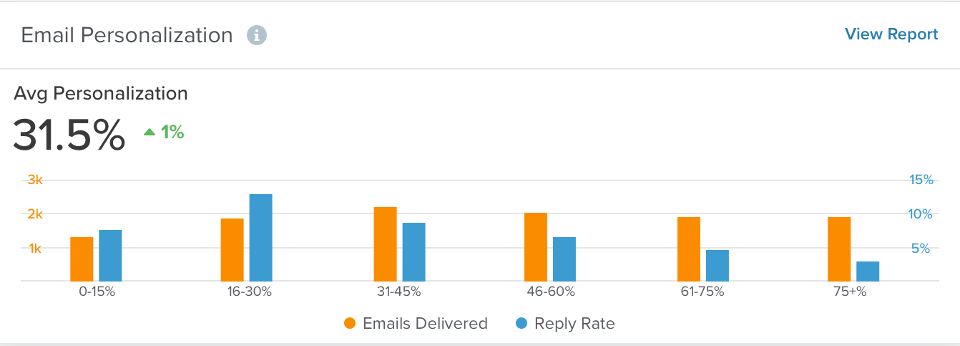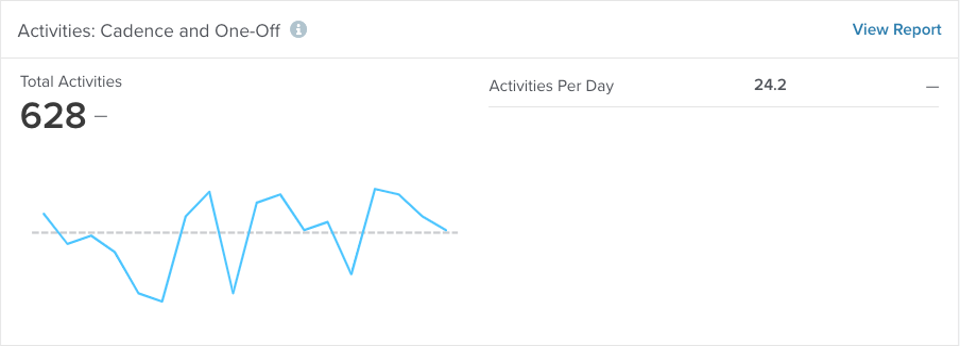You know those emails salespeople send to your department’s email distribution?
“Dear Sir or Madam, I’d love to tell you all about how XYZ will meet your company’s needs. Can we schedule a 20-minute call?”
It’s obvious the email wasn’t written with you in mind. And because of that, it offered you no value. And those messages go straight to the virtual circular file.
Personalization gets better results, with up to 112% increased response rates.
–Everything You Need to Know About Sales Email Personalization
Did you know that personalizing even 20% of your sales emails can double your responses?
You can’t stand those cookie-cutter spam blasts, and neither can your buyers. So, when you make the time to personalize an email, you create a better experience for your customer. You offer them value, instead of pushing a product.
But what’s the right amount of email personalization? ?
Too much and you’ll burn too much time on too few prospects. Too little and you won’t make a strong enough connection.
In this post, we’ll provide a framework to help your revenue team get to the right level of email personalization. It’ll take some thought and testing, but trust us: the payoff is worth it.
Your Personalization Framework
Salesloft’s data science research on email personalization shows that 20% is the sweet spot (seriously, check out the eBook!). But for our framework, let’s use your own personalization data as a starting point.
Step 1: Create a Baseline
With the introduction of personalization scores in Salesloft, you can now keep tabs on the amount of personalization your sellers are using in their email engagement.

Check your Personalization Panel to see what personalization rates garner the best response rates. Dig into your Cadence Reports to see which cadences deliver the best results and check the levels of customization.
Ask your reps roughly how much tailored messaging they add to existing email templates. Use this number to triangulate your benchmark. Still don’t have a figure you’re comfortable with? Then default to using 20% as your starting point.
Step 2: Consider Average Deal Size and Number of Active Accounts per Rep
Are you prospecting for mid-market to enterprise-level customers? Are your average deal sizes in the six figures? Right on!
But if this is your organization, it’s time to take personalization up a few notches. Spend more time creating tailored email messages for each critical buying committee persona. If you’re only working a handful of tier 1 accounts, crank up the personalization even more.
Step 3: Set Expectations for Daily Prospecting Activities
Are you driving your team towards more daily calls and emails? If so, lower your expectations of email personalization and knock down the desired percentage.

At a minimum, make sure you equip your sellers with first-level personalization. In other words, provide pre-made snippets and templates geared towards personas or industries. Use your dynamic fields but have reps double-check they’re populating correctly before sending. Nothing worse than a greeting in all capital letters! That screams automated.
Step 4: Test, Measure, Iterate
You should now have a baseline number as well as a directional goal number for the personalization rate. It’s time to put it to the test!
If the goal is higher than your baseline, train reps to research prospects and use that intel to personalize their emails. If the goal is lower than your baseline, equip sellers with more tools (e.g., persona-based snippets, pre-built templates with dynamic fields, tailored marketing content they can attach, etc.) so they can reach more customers without sacrificing the experience.
Measure for a couple of weeks to see if rates are moving in the right direction and if results (e.g., increased positive email replies) are trending up, too. Iterate until you have the right balance of efficiency and effectiveness.
What Good Email Personalization Looks Like
While the rate of personalization is fairly easy to measure (and should be measured), it’s much harder to measure good personalization! Check out The Anatomy of a Perfect Sales Email to see a delightful email exchange where everyone wins.
Remember, the personalization rate is a great indicator of the level of effort your reps are putting into their email prospecting. But good personalization is a balance between effort and outcome. Not all accounts and prospects are equal, and you should make sure you’re checking rep effort against your organization’s expected ROI. In other words, make sure the juice is worth the squeeze.


